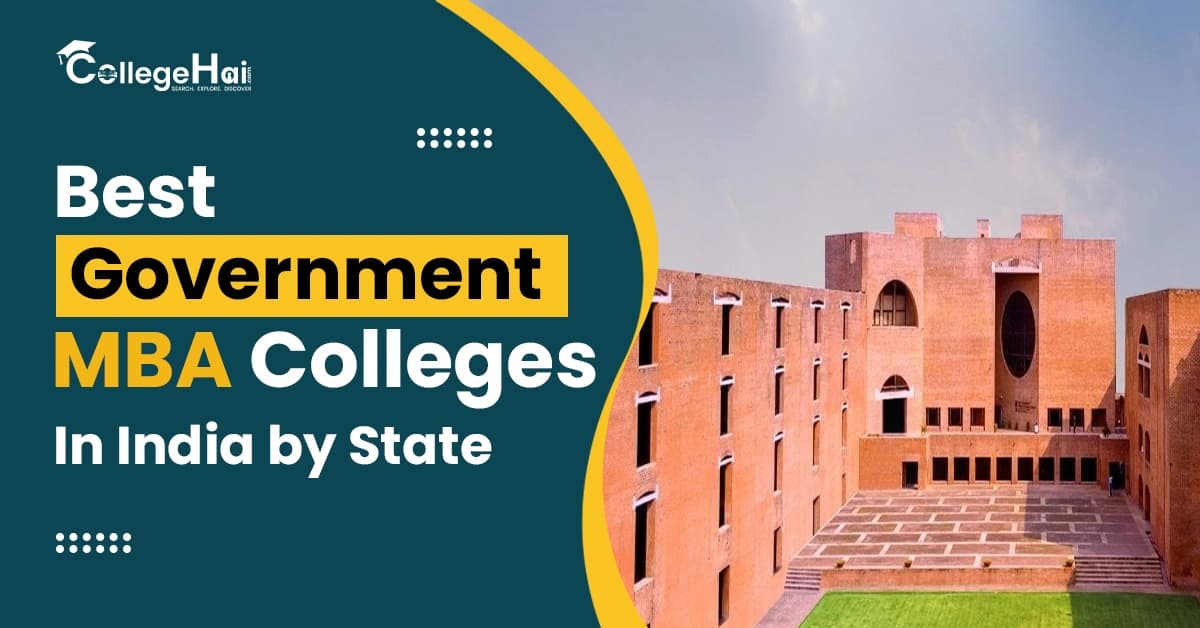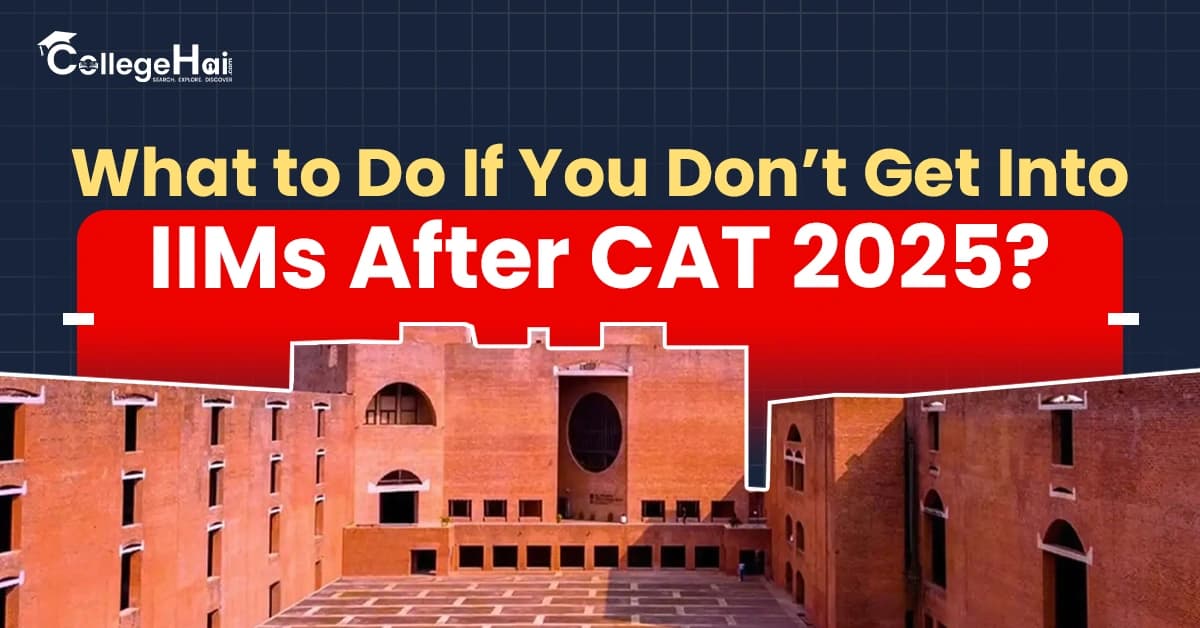The CAT results have arrived, and everyone is holding their breath. To some, it is the overwhelming happiness of getting an IIM interview call. To others, it is a subdued, intricate feeling, like the sharp disappointment of not getting into the IIM. If you are that person, please calm down. Its ok feel your disappointment hitting you, but later on prepare yourself. Because the real definition of a leader is not the way they manage a win, but the way they change their course after a defeat. A career in management, which is successful and of great impact doesn’t start and end with the letters I.I.M.
In fact, the global and Indian business landscape is evolving so rapidly that pigeonholing your potential on a single set of institutions is actually limiting your growth. You prepared rigorously, you faced one of the toughest exams in the country, and that resilience is your biggest asset. This isn't the end of your MBA journey, it's merely a fork in the road, one that leads to equally brilliant, and in some cases, even more specialised and unique destinations. We're talking about the "Powerhouse Peers", the B-Schools whose alumni are driving innovation, scaling companies, and redefining industry standards. So, dust yourself off as the next chapter of your success story starts here.
Step 1: Rethinking the MBA Landscape - It's a Redirection, Not a Rejection
The biggest myth perpetuated in the Indian MBA space is that only an IIM badge guarantees success. This is fundamentally untrue in the modern corporate world. The IIM brand is certainly a massive initial advantage as it opens doors faster but after your first three to five years, your work, your network, and your skills matter infinitely more than the college logo on your resume.
Shifting Focus: From Brand Name to ROI (Return on Investment)
A smart manager focuses on ROI because your MBA decision should be the first manifestation of this trait. ROI is a multi-dimensional metric that includes:
Cost vs. Salary: A college like FMS Delhi with low fees and a high placement rate is a great investment for the future.
Specialisation Fit: A college that focuses on the area of your study (e.g., HR at XLRI, Marketing at MICA) will be able to give you a better start of your career than a short-term generalist degree from a less-ranked IIM.
Location and Network: An institute with a strong local alumni base in your preferred city (e.g., Mumbai, Delhi-NCR, Bangalore) might be more valuable than a distant IIM.
The Powerhouse Peers: Top-Tier Alternatives to IIMs
India's non-IIM B-schools, often called the 'NextGen B-Schools’ or 'Tier-1.5' schools, offer education, placements, and peer networks that directly rival the Old IIMs (IIM A, B, C, L, I, K) and comfortably outperform most of the newer IIMs.
Step 2: Strategy Reloaded - Your Next Move (The Three-Pronged Plan)

Your immediate reaction should not be panic, but a rapid, focused tactical shift. You have three main paths, each requiring a different strategy.
Plan A: The Non-IIM CAT/Other Exam Strategy (Immediate Application)
This is the path of immediate action so do not wait for the IIM rejection letters. Assume the top calls won't convert and aggressively apply to the next-tier schools based on their specific exam requirements.
Prioritise XAT/SNAP/NMAT/GMAT Scores: If you haven't applied, check deadlines immediately. Many top schools accept scores from exams other than the CAT.
XLRI: Only accepts XAT for its flagship BM and HRM programs, which are often considered superior to many IIMs.
NMIMS/Great Lakes: Strongly feature NMAT by GMAC.
Symbiosis (SIBM/SCMHRD): Use the SNAP exam.
Target IIT Management Schools (DMS): Institutes like DMS IIT Delhi, SJMSOM IIT Bombay, and VGSoM IIT Kharagpur offer excellent, technology-integrated MBA programs with much lower fees than top private colleges, providing phenomenal ROI. Their high CAT cut-offs often make them a great match for candidates with a high percentile but a weak profile for IIMs.
Tailor Your Applications (GD-PI Prep): These schools' selection stages usually emphasise more the WAT, GD, and PI. So, get off the mark with your preparation by:
Knowing Inside Out Local and World News & Economy: Understand well enough to talk about the latest national and worldwide trends (e.g., AI in business, India's G20 presidency, Inflation).
Designing Your MBA Personal Statement: Explain with a rationale, vivid and straightforward, the necessity of an MBA from their particular school and the uniqueness of your background.
Plan B: The Work Experience Advantage (The Gap Year Strategy)
If your CAT percentile is below the cut-off for the Tier-1 schools, or if your academic profile (low 10th/12th/Graduation scores, or ‘gaps’) is pulling you down, a strategic work-ex year is your most powerful tool.
Note: A 'gap year' must be a period of strategic growth, not a break. The interview panel needs to see tangible improvements.
Plan C: The Global Edge - International MBAs
If your budget is larger and you aim for a global career, then GMAT/GRE and a foreign MBA might be a better choice, particularly after a couple of years of work experience.
Deepen Knowledge: Choose countries or universities that are known for specialist areas of your industry (e.g. Supply Chain in the Netherlands, Finance in the UK, Tech in the US).
The Duration of One-Year MBA: The program at the Indian School of Business (ISB) in Hyderabad (globally ranked and accepts GMAT/GRE) or the top European schools offers a rigorous one-year format that is a minimal time away from work and career progression.
Step 3: The Strategic B-School Selection Framework (Go Beyond the Hype)
The biggest mistake is choosing a school based only on its NIRF rank. A successful career is built on the culture, specialisation, and network a school offers.
Going Beyond the Ranks: The Four Pillars of Selection
Faculty & Research: Are the professors producing research that gets cited by other researchers? Do they work directly with top companies? This shows a curriculum that is up to date and relevant to the industry.
Specialisation Alignment: A school that is ranked 15th overall but is ranked 3rd for Finance is a better choice for a finance aspirant than a school ranked 10th that is weak in the domain. Besides, what matters most is the presence of specialised programs (e.g., Rural Management at IRMA, Communications at MICA).
Alumni Network & Industry Connect: A small, close, and powerful alumni group (like MDI or SPJIMR) in the consulting/FMCG/finance area is often more beneficial than a very large, disintegrated alumni community. The best way to know the real test is to use LinkedIn to find alumni from your target companies who went to the school.
Placement Quality (Not Quantity): This is the most critical pillar. Never trust the "Highest CTC" as it is an outlier that biases the data.
Placement Metrics to Track (The Real ROI Indicators)
Step 4: The Mindset Shift - Fueling Your Motivation
The emotional blow of not converting an IIM call is real, but it must be momentary. A setback is just information, not a final judgment.
Embrace the "Second Chance" Narrative
The reality is that resilience is a top trait sought by CEOs. Your ability to recover from this disappointment, re-strategise, and commit to a new, powerful path will be your ultimate answer to the question of why you didn't attend an IIM.
Anecdote Example: Many highly successful people—from business leaders to famous entrepreneurs—faced initial rejection from their dream schools or first job applications. Their defining moment was the decision to channel their disappointment into focused, productive action towards an alternative, equally valid goal. Success is a marathon of consistent effort, not a single sprint to an IIM interview.
Strategic Networking: Building Your Own IIM
The IIM network is often cited as its biggest asset. Your job now is to proactively build your own elite network.
Connect Smartly: Start connecting on LinkedIn with alumni from your targeted non-IIM schools who are in roles you aspire to. Ask for 15-minute informational interviews. This not only gives you priceless insights but also prepares you for interviews and creates an early network.
Be a Contributor: Once in your chosen B-School, don't chase the IIM ghost. Fully commit to the opportunities available—excel in your summer internship, take up leadership roles in the student committees, and build deep relationships with your cohort. Your immediate peers are your future network.
Conclusion: Your Story is Still Being Written
The IIM is a destination, but a successful career is a journey. It is easy to get disheartened by a brand name, but the real power lies in your narrative, your competence, and your drive. Take charge of your story now. You’ve proven you can clear CAT, which is a massive achievement. Now, prove that you can be a successful manager by making a smart, strategic, and successful decision about your future, regardless of the IIM tag. The world is looking for high-quality management talent, and the pool of exceptional talent extends far beyond the 21 institutes. Go find your best fit, and dominate your domain.
About the Author

Content Writer



